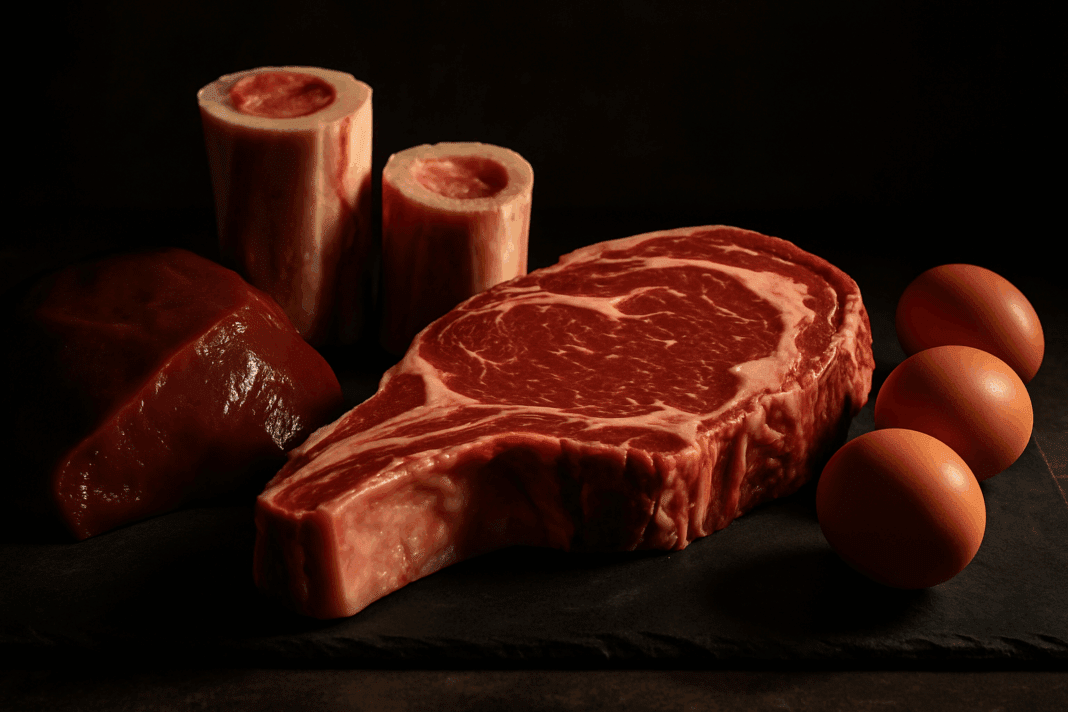In a world where dietary advice is ever-changing and new eating plans emerge regularly, the keto carnivore diet has gained attention as a powerful fusion of two popular nutritional approaches. By blending the principles of the ketogenic diet with the strict meat-only framework of the carnivore diet, this eating plan challenges traditional views of balanced nutrition. Advocates claim it offers significant metabolic advantages, from rapid fat loss and improved mental focus to better inflammation control and digestion. Yet, with such a highly restrictive focus on animal-based foods and almost complete elimination of carbohydrates and plant matter, many questions arise about the sustainability, safety, and long-term effects of the diet.
Understanding this diet requires more than just comparing it to its ketogenic or carnivore ancestors. It involves digging into metabolic science, nutritional biochemistry, and real-world applications. This article explores the keto carnivore diet in depth—what it is, how it works, what benefits it may offer, and what risks may be associated with such a radical dietary shift.
You may also like: Is the Keto Diet Safe or Dangerous? What Experts Say About the Risks, Benefits, and Basics of the Ketogenic Diet

Defining the Keto Carnivore Diet: Where Keto Meets Zero-Carb Carnivory
The keto carnivore diet is, at its core, a high-fat, moderate-protein, and extremely low-carbohydrate eating plan that includes only animal-based foods. Unlike the traditional ketogenic diet, which allows for small amounts of non-starchy vegetables, nuts, and dairy, the keto carnivore diet eliminates all plant-based foods. And unlike the pure carnivore diet—which may include any meat in any ratio—keto carnivore strategically prioritizes fat intake over protein to maintain nutritional ketosis.
The goal of this approach is to remain in a constant state of ketosis, a metabolic process in which the body burns fat instead of glucose for fuel. Ketosis is achieved when carbohydrate intake drops so low that the liver begins converting fats into ketones. These ketones become the primary fuel source for the brain and body, replacing the typical glucose-based energy system. By removing plant-based carbohydrates altogether, the keto carnivore diet aims to simplify this transition and maintain deep ketosis more consistently.
This approach also aligns with an ancestral eating pattern for some proponents, who argue that early humans likely relied heavily on animal fats and proteins during certain historical periods. Whether or not this interpretation of evolutionary biology holds up across all populations, it offers context to the popularity of the diet among biohackers, longevity enthusiasts, and people managing chronic conditions such as autoimmune disease or insulin resistance.

How the Keto Carnivore Diet Induces Ketosis and Alters Metabolism
The fundamental mechanism that powers the keto carnivore diet is the process of nutritional ketosis. Under ordinary dietary conditions, the human body relies on carbohydrates—broken down into glucose—as its primary energy source. But when carbs are dramatically reduced or eliminated, the body is forced to find alternative fuel. This triggers the liver to break down fatty acids into ketone bodies, such as beta-hydroxybutyrate (BHB), which then become the main energy source for cells, including neurons.
This switch to ketone-based metabolism has a cascade of effects on the body. Insulin levels typically drop, which reduces fat storage and promotes the use of stored fat for energy. Glycogen stores in the liver and muscles become depleted, which can lead to rapid initial weight loss due to water loss. Over time, the body becomes more efficient at burning fat and producing ketones—a state often referred to as being “keto-adapted.”
Unlike standard ketogenic diets that may include leafy greens, berries, and some nuts, the keto carnivore diet insists on zero-carb or close-to-zero-carb foods, such as beef, lamb, pork, eggs, liver, and butter. Some adherents include dairy like cheese and heavy cream, while others remove it due to lactose content or perceived inflammatory properties. This refined focus allows for a more predictable and prolonged state of ketosis, potentially minimizing carb cravings and energy crashes that might occur with borderline carb intakes.

Why Some People Turn to the Keto Carnivore Diet for Weight Loss and Metabolic Health
Weight loss is one of the most prominent reasons people try the keto carnivore diet. The combination of ketosis and high satiety from fat and protein creates an environment that may lead to spontaneous calorie restriction without deliberate portion control. Many individuals report feeling full for longer periods after meals, reducing snacking and curbing food cravings. This natural appetite regulation may be especially beneficial for people with a history of binge eating or emotional eating triggered by carb-heavy diets.
Beyond weight loss, the keto carnivore diet is often praised for its effects on metabolic health. People with insulin resistance, prediabetes, or type 2 diabetes may experience improvements in blood sugar control due to the elimination of dietary carbohydrates. Studies have shown that low-carb, high-fat diets can lower HbA1c, reduce fasting insulin levels, and promote fat loss around the liver and abdomen—two key markers of metabolic dysfunction.
Some users also cite improvements in mental clarity, mood stability, and energy levels. These benefits may be tied to the absence of blood sugar fluctuations and the steady energy supply from ketones. Anecdotal evidence further suggests that the keto carnivore diet may help reduce inflammation and symptoms associated with autoimmune diseases like rheumatoid arthritis, Crohn’s disease, and psoriasis—though more controlled studies are needed to verify these claims.

Examining the Risks and Limitations of a Strict Animal-Based Diet
Despite its potential benefits, the keto carnivore diet is not without controversy or risk. One of the most pressing concerns is nutrient deficiency. Eliminating plant foods means excluding major sources of fiber, vitamin C, potassium, magnesium, and polyphenols—many of which play key roles in cardiovascular health, immune function, and gut health. While organ meats like liver and kidney can provide a wide spectrum of vitamins and minerals, they are not always regularly consumed, especially by beginners.
Fiber deficiency is another critical issue. Dietary fiber is known to support the gut microbiome, promote regular bowel movements, and help regulate cholesterol levels. A diet devoid of fiber could lead to changes in gut bacterial diversity, constipation, and potential long-term digestive challenges. Although some proponents argue that the gut may adapt over time to a zero-fiber state, clinical evidence supporting the safety of long-term fiber elimination is lacking.
Cardiovascular risk is also debated. High intake of saturated fats from red meat, butter, and cheese can elevate LDL cholesterol levels in some individuals, potentially increasing the risk for atherosclerosis and heart disease. While some argue that these lipid changes are harmless in the context of low inflammation and stable insulin, the scientific consensus on long-term cardiovascular safety is far from settled. Anyone considering the diet should have their lipid profile and other biomarkers monitored regularly under medical supervision.
Psychological and Lifestyle Implications of a Highly Restrictive Diet
Beyond physiological concerns, the keto carnivore diet can present social, emotional, and psychological challenges. The diet’s rigidity makes it difficult to enjoy meals with others, dine at restaurants, or travel without bringing your own food. This can lead to feelings of isolation, frustration, or anxiety around eating in public settings.
Moreover, some individuals may develop disordered eating behaviors due to the black-and-white thinking that can accompany restrictive dieting. While some thrive on structure and simplicity, others may find the all-or-nothing nature of keto carnivore to be mentally taxing. Adherence fatigue can set in, especially if initial benefits plateau or reverse, and individuals may become discouraged if they struggle to maintain strict rules.
It’s important to emphasize that not every person responds the same way to the keto carnivore diet. While some report enhanced wellbeing, others experience fatigue, mood swings, or digestive discomfort. The key is self-awareness, flexibility, and willingness to adapt as needed based on both objective health data and subjective wellbeing.

Nutritional Strategies to Follow the Keto Carnivore Diet Safely
To reduce the risks associated with the keto carnivore diet, nutritional variety and careful food selection are essential. Including different cuts of meat—both lean and fatty—as well as nutrient-dense organ meats such as liver, heart, and kidney can help cover micronutrient bases. Fatty fish like salmon and sardines provide essential omega-3 fatty acids, which can counterbalance the omega-6 content found in conventional beef or pork.
Electrolyte balance is another critical factor. Since ketogenic diets cause increased excretion of sodium, potassium, and magnesium, supplementation or careful dietary planning may be required. Bone broth, eggs, shellfish, and unprocessed salt can help restore these minerals and prevent symptoms like headaches, cramps, and fatigue.
Hydration also plays a central role in this diet. Without carbohydrates to retain water, dehydration can occur more rapidly. Drinking ample water throughout the day, along with electrolyte support, is crucial for physical performance and overall energy.

Who Might Benefit from the Keto Carnivore Diet—and Who Should Avoid It
Certain populations may find particular benefit in experimenting with the keto carnivore diet. Individuals with autoimmune conditions, food intolerances, or chronic digestive issues sometimes report relief after eliminating plant foods. Athletes looking to enhance fat adaptation or endurance may also find the strictness of keto carnivore beneficial during training cycles.
However, this diet is not suitable for everyone. Pregnant or breastfeeding women, children, individuals with a history of eating disorders, or those with chronic kidney or liver conditions should generally avoid the keto carnivore diet unless medically supervised. People on medications for diabetes or hypertension should be closely monitored, as drastic dietary shifts can significantly alter their blood glucose or blood pressure.
Ultimately, dietary choices should be personalized. What works for one person’s biochemistry, genetics, and lifestyle may not work for another. Any drastic shift in nutrition—especially one that limits entire food groups—should be approached with caution, critical thinking, and ideally the support of a knowledgeable healthcare provider.
Frequently Asked Questions (FAQ): The Keto Carnivore Diet
1. Can the keto carnivore diet support athletic performance or strength training goals?
Yes, the keto carnivore diet can support certain athletic goals, but it may require strategic adaptation depending on the type of training. While endurance athletes may benefit from the fat-adapted metabolism promoted by a keto carnivore lifestyle, those engaging in high-intensity anaerobic training might initially experience performance dips. This is due to the body’s reduced reliance on glycogen, which is typically drawn from carbohydrates. Over time, some athletes find that their performance rebounds as their bodies become more efficient at utilizing fat and ketones for fuel. To support strength and muscle maintenance, careful attention should be paid to protein intake and timing, particularly in post-workout recovery. While the keto carnivore diet doesn’t traditionally include supplements, athletes may benefit from creatine or electrolyte support when training intensely without carbohydrates.
2. How does the keto carnivore diet affect women differently than men?
The keto carnivore diet may produce different outcomes in women compared to men due to hormonal variations, reproductive health considerations, and metabolic differences. Women’s bodies are particularly sensitive to energy availability, and prolonged periods of low carbohydrate intake can sometimes disrupt menstrual cycles or impact fertility, especially if calorie intake drops too low. Some women report increased energy, reduced bloating, and improved skin clarity, while others experience increased fatigue or hormonal imbalances when following a strict keto carnivore protocol. To mitigate risks, it’s advisable for women to track their hormonal symptoms, ensure sufficient dietary fat intake, and consult with a healthcare provider specializing in women’s metabolic health. Adjusting the diet cyclically or incorporating targeted carbohydrate refeeds during certain phases of the menstrual cycle is a strategy some female practitioners use to support balance.
3. Is it possible to do the keto carnivore diet on a budget?
Despite its reputation for being expensive, the keto carnivore diet can be adapted to suit a range of budgets with thoughtful planning. Instead of focusing on premium grass-fed steaks or specialty meats, individuals can rely on affordable cuts such as ground beef, pork shoulder, chicken thighs, eggs, and canned fish. Buying in bulk, choosing organ meats, and shopping sales or local farms can dramatically reduce costs. The simplicity of the diet also cuts expenses on packaged foods, snacks, and supplements often required by other eating plans. Over time, many people find that the cost balances out when accounting for fewer restaurant visits and processed food purchases. While luxury items can enhance variety, the core of the keto carnivore diet remains accessible with the right sourcing strategy.
4. What are some long-term psychological effects of following the keto carnivore diet?
Long-term adherence to the keto carnivore diet can bring about both positive and negative psychological shifts, depending on the individual’s mindset and relationship with food. Some followers report increased mental clarity, reduced anxiety, and improved focus, potentially due to more stable blood sugar and ketone availability to the brain. However, others may develop obsessive tendencies around “clean eating” or experience social isolation due to the restrictive nature of the diet. Celebrations, social meals, and spontaneous dining can become sources of stress when the food environment doesn’t support the keto carnivore lifestyle. Maintaining psychological flexibility, engaging in self-reflection, and allowing room for dietary evolution are essential for long-term emotional health. For those susceptible to disordered eating patterns, professional guidance is strongly recommended when considering such a restrictive protocol.
5. How does the keto carnivore diet affect the microbiome in the long term?
The impact of the keto carnivore diet on the gut microbiome is an area of growing scientific interest but limited long-term human data. Because the diet eliminates plant fiber—traditionally considered the primary fuel for beneficial gut bacteria—some experts express concern about reduced microbial diversity. However, emerging research suggests that the microbiome can adapt to diets rich in animal-based proteins and fats, and that certain bacterial strains may thrive in low-fiber environments. Some individuals report improved digestion and reduced gastrointestinal symptoms after adopting the diet, indicating that changes in the microbiome may not be universally negative. That said, the long-term consequences of a fiber-free microbiome are not fully understood, and periodic testing or strategic reintroduction of microbiome-supporting foods may be beneficial for some individuals. The keto carnivore diet’s effect on gut health remains one of its most debated dimensions.
6. Can the keto carnivore diet be combined with intermittent fasting for enhanced benefits?
Yes, many individuals combine intermittent fasting (IF) with the keto carnivore diet to amplify metabolic benefits. Both approaches naturally complement each other, as the high fat and protein content of the keto carnivore diet enhances satiety, making extended fasting periods more manageable. Common IF patterns such as 16:8 (16 hours fasting, 8 hours eating) or even alternate-day fasting can accelerate fat loss, improve insulin sensitivity, and promote autophagy. However, it’s important to ensure that meals consumed during the eating window are nutrient-dense and sufficient in calories to prevent long-term energy deficits. Those new to either practice should ease in gradually and monitor their energy levels, sleep quality, and physical performance. When done responsibly, the combination of keto carnivore and fasting can be a powerful tool for metabolic health and longevity.
7. What are the emerging research trends related to the keto carnivore diet?
While large-scale clinical research on the keto carnivore diet is still in early stages, interest is rapidly growing. Studies are beginning to explore the diet’s impact on autoimmune conditions, mood disorders, and neurodegenerative diseases such as Parkinson’s and Alzheimer’s. Anecdotal evidence and case reports have fueled interest in how removing plant-based irritants may reduce systemic inflammation or improve neurological resilience. Additionally, researchers are investigating how the diet influences gene expression, mitochondrial efficiency, and ketone signaling beyond energy metabolism. The future may also bring personalized carnivore-style protocols that incorporate genetic data, microbiome analysis, and biomarker tracking. As precision nutrition advances, the keto carnivore diet could become part of tailored therapeutic interventions in metabolic and inflammatory disorders.
8. Are there cultural or ancestral diets similar to the keto carnivore diet?
Yes, several traditional and ancestral diets resemble aspects of the modern keto carnivore diet, particularly in environments where plant availability was limited. Arctic Inuit populations, for example, traditionally consumed a diet rich in fatty fish, marine mammals, and organ meats, with minimal carbohydrate intake. Certain nomadic Mongolian and Maasai diets also emphasized animal-based nutrition due to ecological constraints and cultural practices. These diets were high in fat and protein and often included raw or fermented animal products to maximize nutrient availability. While not exact replicas of the modern keto carnivore approach, these examples demonstrate that human populations have historically thrived on meat-centric eating patterns under specific conditions. However, it’s essential to consider modern health contexts, food quality, and lifestyle differences when drawing comparisons.
9. What are common mistakes people make when starting the keto carnivore diet?
One common mistake is under-consuming fat, especially in the early stages of transitioning into ketosis. Many newcomers focus heavily on lean proteins like chicken breast or tuna, which can leave them feeling fatigued and hungry due to insufficient caloric intake. Another pitfall is failing to replenish electrolytes lost through diuresis—a natural side effect of ketogenic adaptation. Without adequate sodium, potassium, and magnesium, symptoms like headaches, muscle cramps, and heart palpitations may occur. Additionally, beginners often overlook the importance of variety within animal products, avoiding nutrient-dense options like liver or sardines due to unfamiliarity. Successful adaptation to the keto carnivore diet requires not only consistency but also knowledge of how to balance fat-to-protein ratios, mineral intake, and nutrient density.
10. What role does self-experimentation play in succeeding with the keto carnivore diet?
Self-experimentation is central to long-term success on the keto carnivore diet because every body responds differently to extreme dietary shifts. Unlike one-size-fits-all plans, keto carnivore requires close attention to physical, emotional, and cognitive feedback. Individuals may need to fine-tune meal timing, fat-to-protein ratios, and organ meat consumption to match their unique needs. Tracking blood ketones, glucose, and inflammation markers can help gauge metabolic progress and guide adjustments. Many long-term practitioners adopt a “test, observe, adjust” mindset—recognizing that what works today may need refinement over time. By approaching the keto carnivore diet as a flexible, evolving journey rather than a rigid rulebook, individuals are more likely to achieve lasting health benefits and avoid burnout.
Conclusion: Weighing the Promises and Pitfalls of the Keto Carnivore Diet
The keto carnivore diet is a bold and uncompromising approach to nutrition that strips away plant foods in favor of a purely animal-based, high-fat intake designed to sustain ketosis. For some, this radical simplicity provides relief from chronic symptoms, sharper mental performance, and sustainable fat loss. For others, the diet’s potential downsides—including nutrient deficiencies, gut health concerns, and social limitations—may outweigh the benefits.
As with any dietary intervention, the key lies in personalization, informed decision-making, and ongoing self-evaluation. The keto carnivore approach may be a therapeutic tool for certain conditions or individuals, but it is not a universal prescription. Careful planning, regular health monitoring, and open-minded flexibility are essential to making this restrictive diet both safe and sustainable.
In the end, understanding the keto carnivore diet is not just about following a set of food rules. It’s about engaging deeply with your body’s responses, honoring its signals, and aligning your nutrition with your unique biology and goals. Whether as a short-term experiment or a long-term lifestyle, the keto carnivore diet demands a thoughtful, respectful, and well-informed commitment to whole-body health.
Further Reading:
Carnivore Diet Ketosis: What You Need to Know
What Is a Ketovore Diet? Should You Be Doing It?
Keto Carnivore Diet | Everything You Need to Know


